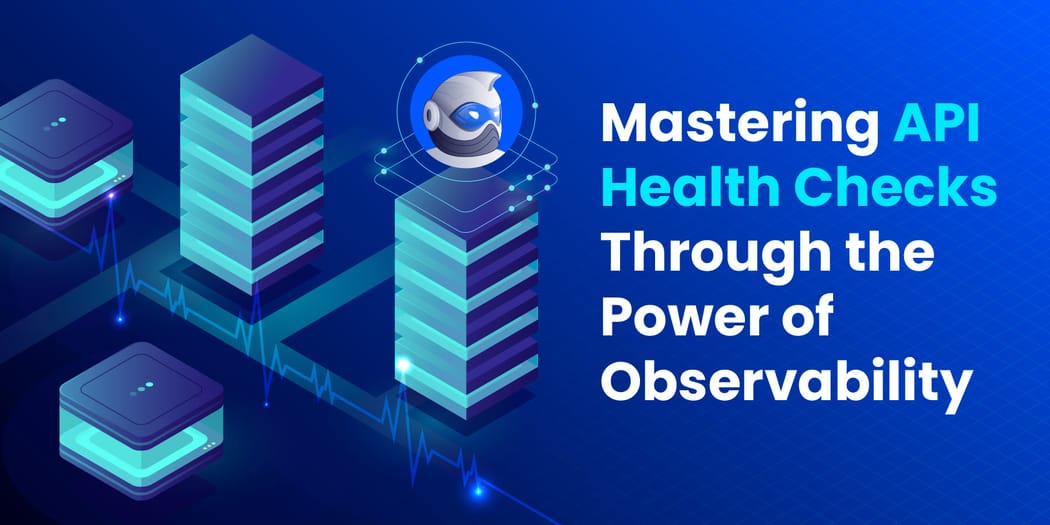The concept of observability might sound like a tech buzzword, but it’s far more than just some new hotness. It operates as a fine-tuned radar system, meticulously tracking your APIs' vital signs — metrics, logs, and traces that provide essential insights into their behavior.
But why exactly is observability the knight in shining armor your APIs need? Where stability, speed, and security are king, observability arms you with the intelligence to identify, diagnose, and mitigate issues promptly.
The Three Pillars of Observability
When managing and maintaining APIs, the term "observability" is undoubtedly one of the key things developers need to understand. Observability refers to your system's ability to understand its internal state based on external outputs, and it primarily stands on three primary pillars: logging, tracing, and monitoring. Let's take a deeper dive into each of these pillars.
Logging
The first pillar, logging, is all about creating a record of events happening within a system. This includes everything from system events to normal user behaviors. Each logged entry records specific details about the event, such as when it occurred, what happened, and what triggered it.
For example, let’s say you have an eCommerce API and want to track user purchase behavior. With logging, each purchase event triggers a log entry that records key data like the user’s ID, timestamp, what they purchased, and the total cost. This data gives developers the freedom to troubleshoot specific issues or analyze user behavior and trends.
Tracing
Tracing, the second pillar, extends beyond logging by providing the story of a transaction or workflow across multiple components. These traces are like breadcrumbs that help developers understand the complete sequence of events and everything that’s dependent on them.
As an example, your company owns a ride-booking service. When a booking is made, numerous microservices might come into play, from user authentication to ride allocation and payment processing. Tracing allows you to follow the entire journey from start to finish as one coherent story.
Metrics
Our last pillar, metrics, is about actively monitoring a system's overall performance and health based on predefined metrics and thresholds. Tracking these metrics proactively alerts you to any anomalies that can indicate performance issues or critical system failures.
Let’s say you’ve got a video streaming API and key performance indicators (KPIs) like streaming latency, buffering times, and server load you need to keep in mind. Setting up monitoring for these metrics can give you notifications whenever your latency exceeds a specific threshold or when server load spikes, giving you the chance to troubleshoot and fix these issues before they impact your users.
With these powers combined, they form Captain Planet the three pillars of observability, each providing insights into and context to make your APIs more resilient and reliable. Understanding these pillars' power and how to use them effectively is critical to maintaining robust, efficient APIs that meet user needs and keep you ahead of the competition.
Monitoring Vs. Observability
You’ve probably heard these terms before, especially when dealing with APIs. However, they aren’t as interchangeable as you may think. Monitoring, as vital to API health as it is, consists of checking predefined metrics and raising flags when numbers hit certain thresholds. It helps keep an eye on well-known issues to ensure your API runs as smoothly as possible.
On the other hand, observability goes beyond seeing and responding to what happens. It allows you to get deeper insights into the “why” of your API’s behavior, catching the unknowns and reaching in-depth insights that monitoring alone can’t provide. It’s a gateway into a holistic approach to understanding your APIs and your system as a whole, empowering you to be proactive, not reactive. Balancing monitoring and observability is critical to keeping your API running smoothly and efficiently.
The Impact of Observability on API Development and Management
All three pillars affect APIs in some way, and understanding this can not only help you understand your API better but also help you create more efficient and reliable APIs in the future. Let’s dive a little deeper into how observability affects API development and management.
- Metrics. These quantitative measurements provide an overview of your API's health. They allow developers to swiftly identify and address issues, while performance trends can help predict and prevent future problems. Metrics form the basis for making informed decisions on system optimization and enhancements.
- Logs. As a comprehensive record of system events, logs offer a deep dive into API performance details. They provide the context to understand the 'why' behind metrics, allowing meaningful analysis and debugging of system events. Developers can use logs to review the specific sequence of events leading to an error, parameter values at a given time, or the exact point an issue arose.
- Traces. Tracing is all about mapping the journey of requests across various services. In complex microservices-based architectures, traces act as roadmaps, leading to the source of latency issues and timeouts. It pinpoints the particular service causing problems, making error isolation and resolution quicker, thereby enhancing the reliability and efficiency of APIs.
Best Practices for Implementing Observability
Staying on top of your system's health is not just about troubleshooting issues when they become evident — it's about proactively understanding your system's behavior under the hood. Implementing observability effectively can chart your course toward optimal API performance, stability, and longevity. Here are some best practices you should keep in mind:
- Start with the basics. Lay out exactly what you need to track through metrics, the events you want to log, and processes you want to trace within your system.
- Adopt a granular approach. Track as many details as possible, breaking down any complex systems into smaller components for manageable monitoring.
- Design for scale. Ensure your observability practices can scale as your systems grow. Try to avoid any unnecessary complexities that could derail your monitoring efforts.
- Use context-rich logs. Make your logs more informative by adding meaningful context to the log messages. It'll provide better insights and facilitate easier debugging.
- Trace across services. If you truly want to visualize the entire journey of a request, your tracing should run through any services that integrate with your API.
- Embrace automation. Work smart, not hard. Set up automation tools that can pull your metrics, logs, and traces for efficient and consistent observability.
- Review and iterate regularly. Evaluate your observability practices to help adjust to changing systems and upgrades.
Smooth sailing in API development and management involves being equipped with the right tools and strategies. Embrace a comprehensive, structured approach to observability and witness the transformative impact on your API performance, reliability, and success.
Final Thoughts
Navigating API development and management can be challenging, but a deep understanding of observability can help. With a comprehensive approach centered around metrics, logs, and traces, you can ensure that your APIs are robust, stable, and agile in the face of ever-evolving digital ecosystems. Observability plays a critical role in maintaining API performance and holds the keys to unlocking the door to your software's more efficient, secure, and successful future.
Are you ready to embark on seamlessly implementing observability into your APIs? Discover how Treblle revolutionizes your API monitoring experience, offering an all-in-one platform to optimize your API performance, streamline your workflows, and unleash your full potential.






